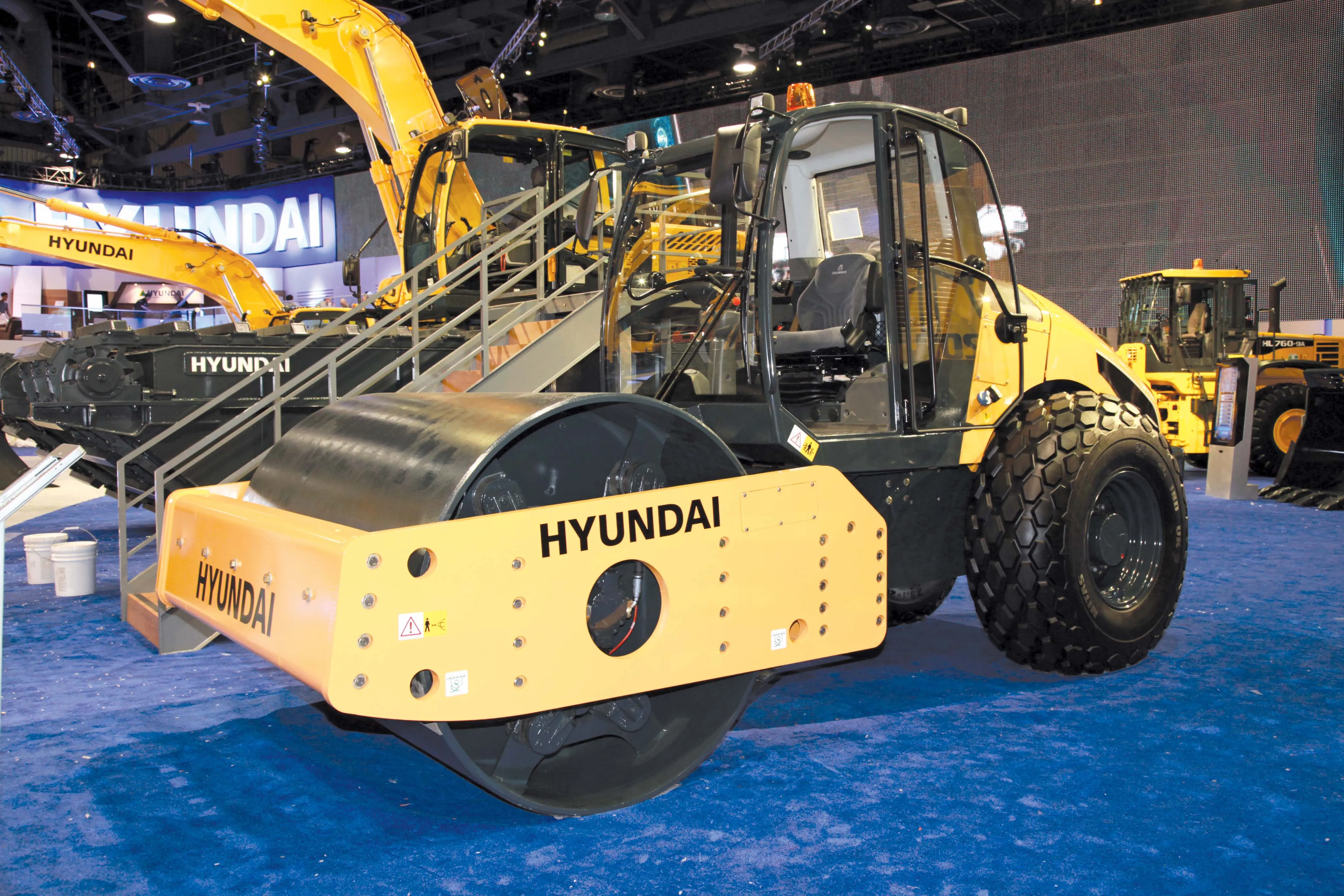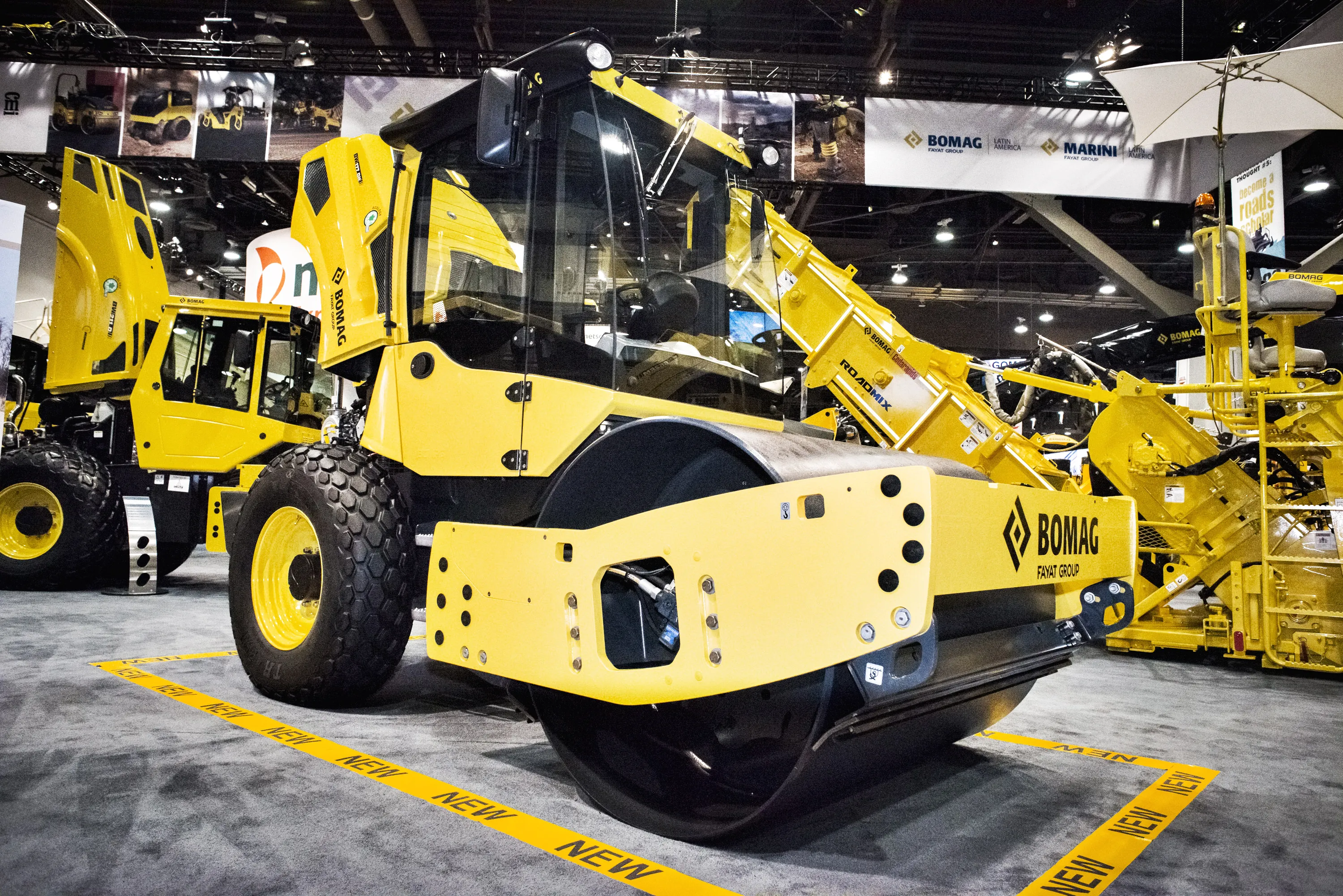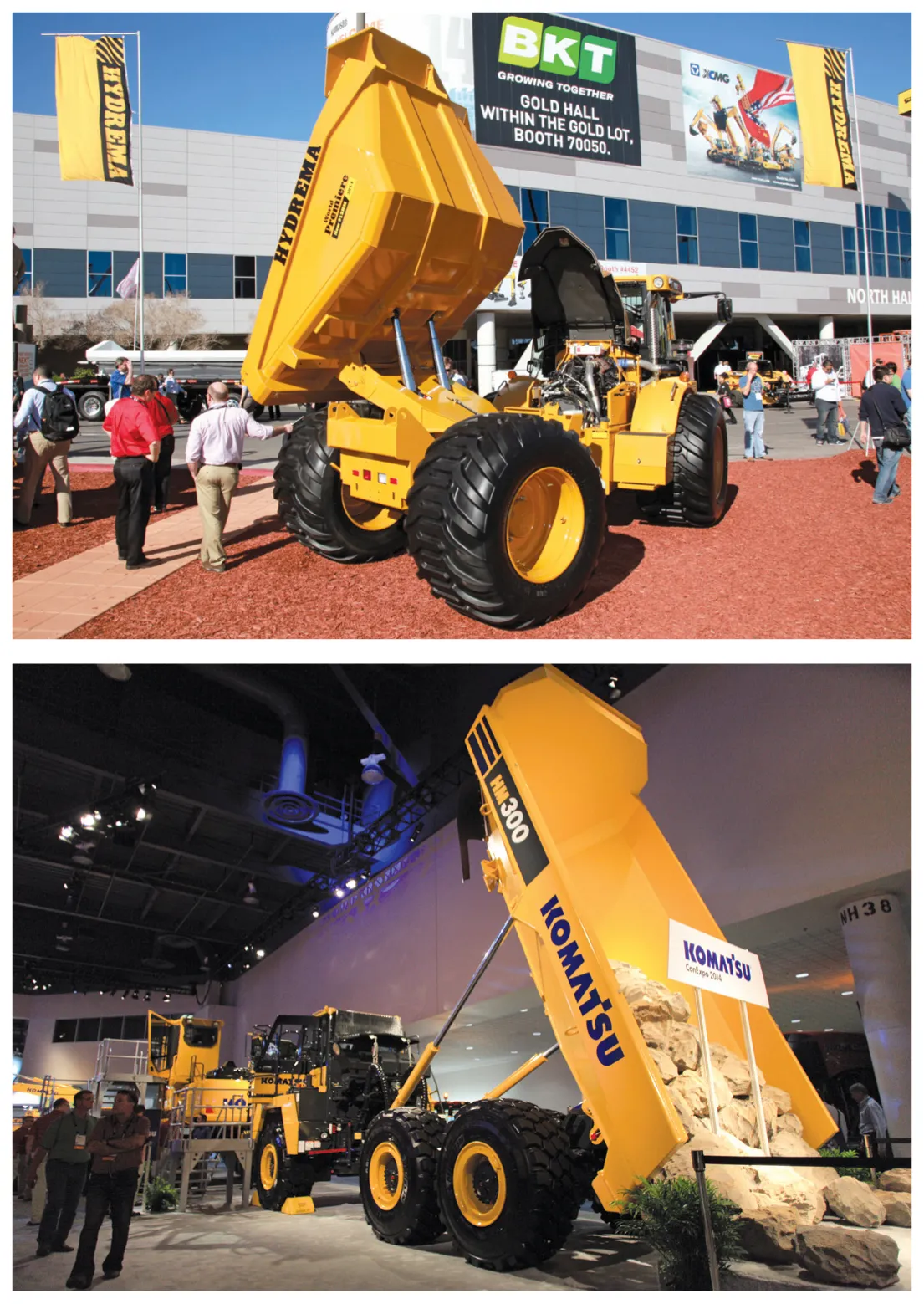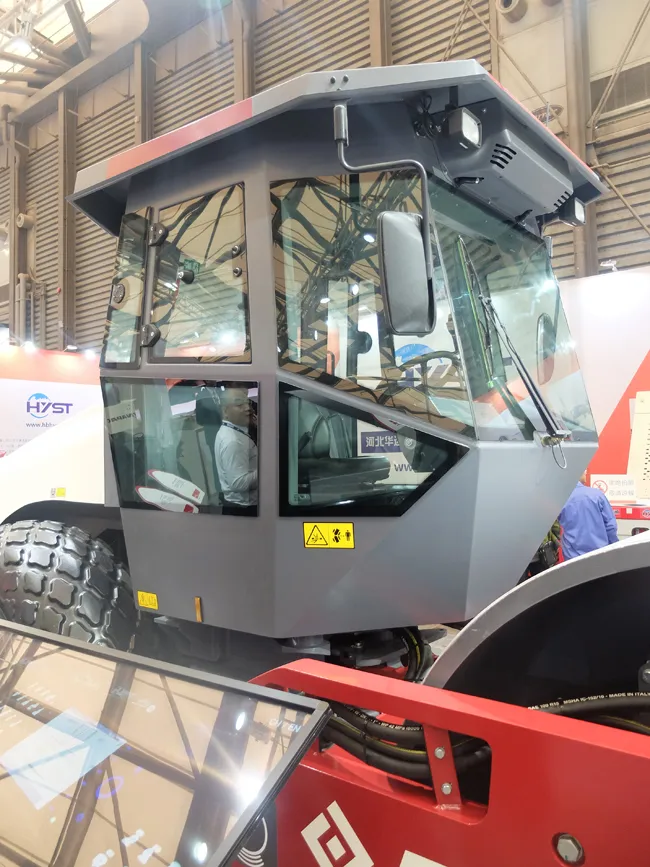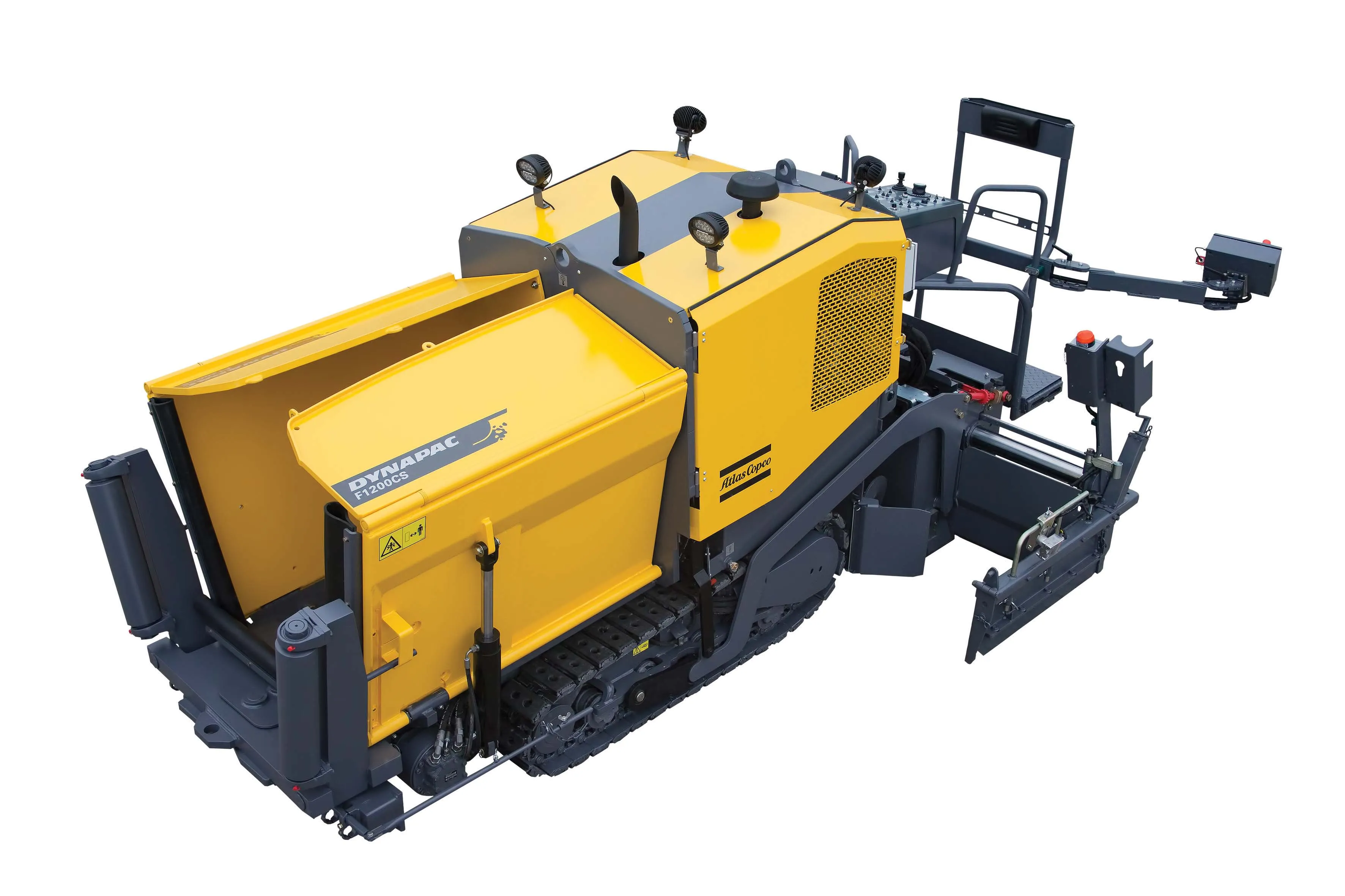Efficient new soil compaction machines featuring the latest technology are now coming to market – Mike Woof reports
The start of 2014 has seen a major development for the construction equipment sector, with the Tier 4 Final emissions requirements at last beginning to take effect. The implications of the drive towards the introduction of low emission engine technology have been seen right across the off-highway machinery equipment industry, and the soil compaction segment is no exception.
Many of the major firms have developed machines that meet the new exhaust emissions legislation for Europe and North America. One of the major players in the compaction market, 172 BOMAG is keen to stay abreast of the legislation and is introducing new soil compaction solutions for the 4-8tonne class with the BW177D-5 being the first of this improved range. Weighing in at 6.7tonnes, the machine has a Tier 4 Final compliant diesel delivering 55.4kW and an Ecomode system to lower fuel consumption. The firm is offering two versions of the compactor: the DH with a hydraulic pump for the front and rear drives giving better gradeability; and the standard D variant with a single pump for both.
The new models are more compact than earlier models, which makes them easier to transport and this is further aided by a loading function that can be set by the operator, slowing the drive system and providing high torque for when the compactor needs to be driven onto a truck or low-loader. The BW177-5 is designed for use in sites with restricted space such as urban applications and has a small turning radius, as well as low noise and exhaust emissions, while maintenance has been improved, with better access for servicing.
The operating platform has also been improved and the machine has an adjustable steering wheel, the firm’s sophisticated Terrameter compaction measurement system, which is integrated with the display. This provides compaction readings and allows the operator to see where the weak spots are and what requires additional passes. The Terrameter system is integrated with a GPS package so as to give location data, which can all be recorded for later analysis of operations.
6097 Chicago Pneumatic is offering its new soil compactors to the North American market and the models are said to complement the firm’s light compaction equipment. The new models are the SR130D and SR130PD small vibratory soil rollers, which are said to be ergonomically designed with large operator platforms, carefully positioned steps, shock mounts and a sliding operator seat as well as a warning panel and a fuel gauge. Gradeability is said to be good and the machines are also manoeuvrable and versatile.
From 161 Atlas Copco’s 206 Dynapac brand comes its fifth generation soil compactor range with the new Dynapac CA1300 and CA1500 machines sharing features with the larger machines launched previously. Key features include reduced operating costs, low operating noise and fuel consumption and ease of servicing. High performance is claimed due to the sophisticated Active Bouncing Control system that prevents over-compaction and also minimises the risk of damage to the machine. Compaction performance is also aided by the optimised amplitude, which helps maximise productivity. The CA1300 weighs 4.5tonnes in standard trim, features a drum width of 1.37m and is powered by a 55kW 1265 Kubota diesel while the CA1500 weighs in at 7tonnes in standard trim with cab, has a drum width of 1.68m and is powered by a 196 Cummins diesel rated at 74kW.
One of the most interesting developments from 228 Hamm for its soil compactor line is a specially modified variant of the H 25i VC single-drum roller. This is equipped with a drum equipped with fittings for a range of teeth to be mounted so that the machine can break up old concrete surfaces or reduce the size of blasted rock fragments. Broken concrete surfaces would then suit recycling in mobile crushing and screening plant. The company offers different teeth to suit an array of applications and material types, while the machine can also be used in a conventional padfoot format for soil compaction if required.
Although best known for its excavators and wheeled loaders, South Korean firm 236 Hyundai is also competing in the North American market for soil compaction machines with the HR120C-9. This is the first in a range of soil compactors from Hyundai, but which will only be available in selected markets. The 12tonne HR120C-9 is made for Hyundai by the German firm 162 Atlas Weyhausen and features a smooth drum and a permanent front axle weight of 6.9tonnes. The machine is powered by a 201 Deutz diesel that meets Tier 4 emissions regulations due to its use of selective catalytic reduction (SCR) emissions control system, which requires the use of diesel exhaust fluid. When the range is complete, the Hyundai HR soil compactors will offer operating weights from 12-13.9tonnes, and have drum widths of 2.1m, with engine outputs of either 96kW or 103kW.
255 JCB is now offering its VM117D soil compactor in North America. This 11tonne machine is driven by one of the firm’s Ecomax diesels delivering 93kW and meeting Tier 4 Interim requirements and offering a 10% fuel saving over earlier generation units in this class. The company says that the single-drum VM117D can be used for a wide range of work in infrastructure and housing projects. It has a smooth drum as standard with pad foot drums as an option. Performance improvements have been made to the compaction criteria, including amplitude, frequency, centrifugal force, static linear load and weight distribution, according to the company. This means that fewer passes are needed to meet material density requirements, boosting overall productivity.
The machine is also equipped with JCB’s latest intelligent compaction system (ICS), which automatically and infinitely adjusts the VM117D’s amplitude and frequency settings, according to the achieved compaction results in improved fuel economy and productivity. A range of compaction recording systems (compatronic) is available for the model, from a basic system to compaction analysis system, combined with GPS tracking and a printer function to document the work. JCB’s Automatic Vibration Control compaction control system is standard on the VM117D model and designed to avoid over-compaction at the end of each pass.
2624 Sakai America has unveiled its 2m-wide SV540 vibratory drum roller. This machine features an Eco mode, which according to the company can reduce fuel consumption by up to 20%. The new model also has a spacious cab, with new features including heating, air conditioning and a radio. A key feature of the SV540 its automatic traction control, which allows the operator to climb steep slopes in forward or reverse and without the risk of losing traction. Power for the machine comes from a Cummins QSB4.5 diesel, which meets Tier 4 Interim requirements. The company claims that this machine delivers high centrifugal force, achieving uniform compaction throughout lift thickness and the unit is offered with several amplitude and frequency setting combinations, as well as a heavy-duty center hitch design. Features of its smaller sibling, the SV412 model, include a traction control system, high centrifugal force outputs, a range of amplitude independent drum vibration and frequency setting combinations.
A notable development at Conexpo was the new soil compactor being introduced by 2490 XCMG to North America. This is one of several machines the company has developed to meet North American requirements. The CV122U is a single drum vibratory roller that has been specifically designed for the North American market from the proven XS120 model, featuring hydrostatic drive and power from an emissions compliant diesel. The company claims high compaction performance, ease of operation and maintenance and high reliability, as well as good all-round visibility from the cab. The machine features a dual-amplitude vibration system, combined with delivering high vibration forces, which is said to deliver effective compaction of different types of materials with different thickness layers.
